Wiley 978-0-470-54966-7 Datasheet
- Category
- Software manuals
- Type
- Datasheet

Introducing Safari/WebKit
Development for iPhone 3.0
The introduction of the iPhone and the subsequent unveiling of the iPod touch have revolution-
ized the way people interact with handheld devices. No longer do users have to use a keypad for
screen navigation or browse the Web through “dumbed down” pages. These mobile devices have
brought touch screen input, a revolutionary interface design, and a fully functional Web browser
right into the palms of people’s hands.
Seeing the platform’s potential, all the segments of the developer community jumped on board.
Although native applications may receive most of the attention, you can still create apps for
iPhone without writing a single line of Objective-C, the programming language used to develop
native iPhone apps. In fact, iPhone’s WebKit-based browser provides a compelling application
development platform for Web developers who want to create custom apps for iPhone using
familiar Web technologies.
Each subsequent release of the iPhone OS and Safari on iPhone has put increased power into the
hands of Web developers, and as I’ll discuss shortly, the iPhone OS 3.0 release is no exception.
Discovering the Safari/WebKit Platform
An iPhone Web application runs inside of the built-in Safari browser that is based on Web stan-
dards, including these:
HTML/XHTML (HTML 4.01 and XHTML 1.9, XHTML mobile profi le document types) ❑
CSS (CSS 2.1 and partial CSS3) ❑
49667c01.indd 149667c01.indd 1 10/9/09 8:04:22 AM10/9/09 8:04:22 AM
COPYRIGHTED MATERIAL

2
Chapter 1: Introducing Safari/WebKit Development for iPhone 3.0
JavaScript (ECMAScript 3, JavaScript 1.4) ❑
AJAX (for example, XMLHTTPRequest) ❑
SVG (Scalable Vector Graphics) 1.1 ❑
HTML 5 media tags ❑
Ancillary technologies (video and audio media, PDF, and so on) ❑
Safari on iPhone and iPod touch (which I refer to throughout the book as simply Safari) becomes the
platform upon which you develop applications and becomes the shell in which your apps must operate
(see Figure 1-1).
Figure 1-1: Safari user interface
Safari is built with the same open source WebKit browser engine as Safari for OS X and Safari for
Windows. However, although the Safari family of browsers is built on a common framework, you’ll
fi nd it helpful to think of Safari on iPhone as a close sibling to its Mac and Windows counterparts,
not an identical twin to either of them. Safari on iPhone, for example, does not provide the full extent
of CSS or JavaScript functionality that its desktop counterpart does.
In addition, Safari on iPhone provides only a limited number of settings that users can confi gure. As
Figure 1-2 shows, users can turn off and on support for JavaScript, plug-ins, and a pop-up blocker. Users
can also choose whether they want to always accept cookies, accept cookies only from sites they visit, or
never accept cookies. A user can also manually clear the history, cookies, and cache from this screen.
49667c01.indd 249667c01.indd 2 10/9/09 8:04:22 AM10/9/09 8:04:22 AM

3
Chapter 1: Introducing Safari/WebKit Development for iPhone 3.0
Figure 1-2: Safari on iPhone preferences
Quite obviously, native apps and Web apps are not identical — both from developer and end-user
standpoints. From a developer standpoint, the major difference is the programming language — uti-
lizing Web technologies rather than Objective-C. However, there are also key end-user implications,
including these:
Performance: ❑ The performance of a Safari-based Web application is not going to be as respon-
sive as a native compiled application, both because of the interpretive nature of web scripting
as well as the fact that the application operates over Wi-Fi and 3G networks. (Remember, iPod
touch supports Wi-Fi access only.) However, in spite of the technological constraints, you can
perform many optimizations to achieve acceptable performance. (Several of these techniques
are covered in Chapter 13, “Bandwidth and Performance Optimizations.”)
Table 1-1 shows the bandwidth performance of Wi-Fi, 3G, and the older EDGE networks.
Table 1-1: Network Performance
Network Bandwidth
Wi-Fi 54 Mbps
3G Up to 7.2 Mbps
EDGE 70–135 Kbps, 200 Kbps burst
49667c01.indd 349667c01.indd 3 10/9/09 8:04:23 AM10/9/09 8:04:23 AM

4
Chapter 1: Introducing Safari/WebKit Development for iPhone 3.0
Launching: ❑ All native applications are launched from the main Home screen of the iPhone and
iPod touch (see Figure 1-3). In the original iPhone OS release, Apple provided no way for Web
apps to be launched from here, requiring Web apps to be accessed from the Safari Bookmarks
list. Fortunately, subsequent releases of the iPhone OS have given users the ability to add “Web
Clip” icons for their Web apps (such as the Cup-O-Joe Web app in Figure 1-4).
Figure 1-3: Built-in applications launch
from the main Home screen
Figure 1-4: Web applications can also
be included on the Home screen
49667c01.indd 449667c01.indd 4 10/9/09 8:04:23 AM10/9/09 8:04:23 AM

5
Chapter 1: Introducing Safari/WebKit Development for iPhone 3.0
User interface (UI): ❑ Native iPhone applications often adhere to Apple UI design guidelines.
Fortunately, using open source frameworks and standard Web technologies, you can closely
emulate native application design using a combination of HTML, CSS, and JavaScript. Figures 1-5
and 1-6 compare the UI design of a native application and a Safari-based Web application.
What’s more, iPhone OS enables you to hide all Safari browser UI elements through meta tags, enabling
you to essentially emulate the look and feel of a native app. (See Figure 1-7.)
Figure 1-5: Edge-to-edge navigation
pane in the native app
Figure 1-6: Edge-to-edge navigation
pane in a custom Web application
49667c01.indd 549667c01.indd 5 10/9/09 8:04:23 AM10/9/09 8:04:23 AM

6
Chapter 1: Introducing Safari/WebKit Development for iPhone 3.0
Figure 1-7: Web app or native app?
It’s hard to tell.
What’s New in iPhone OS 3.0
for Web App Developers
There are several new capabilities available to Web app developers with the release of iPhone OS 3.0
and Safari 4.0 iPhone. These are highlighted here:
Geolocation: ❑ Safari on iPhone now supports HTML 5 geolocation capabilities, which enable
JavaScript to interact with iPhone’s GPS service to retrieve the current location of the iPhone
(see Figures 1-8 and 1-9). As a result, you can create apps that can broadcast the location of a
GPS-enabled iPhone.
Google is using this capability with its Latitude service for sharing your location with your friends.
HTML 5 Media Tags: ❑ The newest release of Safari on iPhone supports HTML 5
video and
audio tags for embedding video and audio content in Web pages. These new elements elimi-
nate the need for complicated
embed and object tags for embedding multimedia elements and
allow you to utilize a powerful JavaScript API. What’s more, because iPhone doesn’t support
Flash, you can use the
video tag to embed QuickTime MOV fi les.
Safari is the fi rst major browser to provide full support for HTML 5 media tags; therefore, you
have to be careful in their usage on standard Web sites because other browsers may not support
it yet. However, because you are creating an app specifi cally for the iPhone, you can make full
use of these tags.
CSS animation and effects: ❑ The new release of Safari supports CSS animation, which enables
you to manipulate elements in various ways, such as scaling, rotating, fading, and skewing.
Safari on iPhone also supports CSS effects, which enable you to create gradients, masks, and
refl ections entirely through CSS.
49667c01.indd 649667c01.indd 6 10/9/09 8:04:23 AM10/9/09 8:04:23 AM

7
Chapter 1: Introducing Safari/WebKit Development for iPhone 3.0
SVG: ❑ SVG (or Scalable Vector Graphics) is a new XML-based format for creating static and ani-
mated vector graphics. With SVG support, Safari on iPhone not only provides a way to work
with scalable graphics, but actually provides a technology that could replace the need for Flash
to create animated media.
Figure 1-8: Users are asked to confi rm
GPS location services support
Figure 1-9: Test Web app that displays
geolocation info in real time
49667c01.indd 749667c01.indd 7 10/9/09 8:04:23 AM10/9/09 8:04:23 AM

8
Chapter 1: Introducing Safari/WebKit Development for iPhone 3.0
Four Ways to Develop Web Apps for iPhone
A Web application that you can run in any browser and an iPhone Web application are certainly made
using the same common ingredients — HTML, CSS, JavaScript, and AJAX — but they are not identical.
In fact, there are four approaches to consider when developing for iPhone:
Level 1 ❑ — Fully compatible Web site/application: The ground-level approach is to develop
a Web site/app that is “iPhone/iPod touch-friendly” and is fully compatible with the Apple
mobile devices (see Figure 1-10). These sites avoid using technologies that the Apple mobile
devices do not support, including Flash, Java, and other plug-ins. The basic structure of the
presentation layer also maximizes the use of blocks and columns to make it easy for users
to navigate and zoom within the site. This basic approach does not do anything specifi c for
iPhone users but makes sure that there are no barriers to a satisfactory browsing experience.
(See Chapter 12, “Enabling and Optimizing Web Sites for the iPhone and iPod Touch,” for
converting a Web site to be friendly for iPhone users.)
Figure 1-10: The site is easy to navigate
Level 2 ❑ — Web site/application optimized for Safari: The second level of support for iPhone
is to not only provide a basic level of experience for the Safari on iPhone user, but to provide an
optimized experience for those who use Safari browsers, such as utilizing some of the enhanced
WebKit CSS properties supported by Safari.
Level 3 ❑ — Dedicated iPhone/iPod touch Web site/application: A third level of support is to
provide a Web site tailored to the viewport dimensions of the iPhone and provide a strong Web
browsing experience for Apple device users (see Figures 1-11 and 1-12). However, although
these sites are tailored for iPhone viewing, they do not always seek to emulate Apple UI design.
And, in many cases, these are often stripped-down versions of a fuller Web site or application.
49667c01.indd 849667c01.indd 8 10/9/09 8:04:23 AM10/9/09 8:04:23 AM

9
Chapter 1: Introducing Safari/WebKit Development for iPhone 3.0
Figure 1-11: Amazon’s mobile site
Figure 1-12: Facebook’s dedicated
site for iPhone
Level 4 ❑ — Native-looking iPhone Web application: The fi nal approach is to provide a Web
application that is designed exclusively for iPhone and closely emulates the UI design of native
applications (see Figure 1-13). One of the design goals is to minimize users’ awareness that they
are even inside of a browser environment. Moreover, a full-fl edged iPhone application will, as
is relevant, integrate with iPhone-specifi c services, including Phone, Mail, and Google Maps.
49667c01.indd 949667c01.indd 9 10/9/09 8:04:23 AM10/9/09 8:04:23 AM

10
Chapter 1: Introducing Safari/WebKit Development for iPhone 3.0
Therefore, as you consider your application specifi cations, be sure to identify which level of user expe-
rience you want to provide iPhone users, and design your application accordingly. This book focuses
primarily on developing native-looking Web applications.
Figure 1-13: iPhone Web app that
looks like a native app
The Finger Is Not a Mouse
As you develop applications for iPhone, one key design consideration that you need to drill into
your consciousness is that the fi nger is not a mouse. On the desktop, a user can use a variety of input
devices — such as an Apple Mighty Mouse, a Logitech trackball, or a laptop touchpad. But, on-screen,
the mouse pointer for each of these pieces of hardware is always identical in shape, size, and behavior.
However, on iPhone, the pointing device is always going to be unique. Ballerinas, for example, will
probably input with tiny, thin fi ngers, whereas NFL players will use big, fat input devices. Most of
the rest of us will fall somewhere in between. Additionally, fi ngers are not nearly as precise as mouse
pointers are, making interface sizing and positioning issues very important, whether you are creating
an iPhone-friendly Web site or a full-fl edged iPhone Web application.
Also, fi nger input does not always correspond to mouse input. A mouse has a left-click, right-click,
scroll, and mouse move. In contrast, a fi nger has a tap, fl ick, drag, and pinch. However, as an appli-
cation developer, you will want to manage what types of gestures your application supports. Some
of the gestures that are used for browsing Web sites (such as the double-tap zoom) are actually not
something you want to support inside of an iPhone Web app. Table 1-2 displays the gestures that are
supported on iPhone as well as whether this type of gesture is typically supported on a Web site or a
full Web application.
49667c01.indd 1049667c01.indd 10 10/9/09 8:04:23 AM10/9/09 8:04:23 AM

11
Chapter 1: Introducing Safari/WebKit Development for iPhone 3.0
Table 1-2: Finger Gestures
Gesture Result Web site App
Tap Equivalent to a mouse click Yes Yes
Drag Moves around the viewport Yes Yes
Flick Scrolls up and down a page or list Yes Yes
Double-tap Zooms in and centers a block of content Yes No
Pinch open Zooms in on content Yes No
Pinch close Zooms out to display more of a page Yes No
Touch and hold Displays an info bubble Yes No
Two-fi nger scroll Scrolls up and down an
iframe or element with the
CSS
overflow:auto property
Yes Yes
Limitations and Constraints
Because iPhone is a mobile device, it is obviously going to have resource constraints that you need to
be fully aware of as you develop applications. Table 1-3 lists the resource limitations and technical con-
straints. What’s more, certain technologies (listed in Table 1-4) are unsupported, and you need to steer
away from them when you develop for iPhone and iPod touch.
Table 1-3: Resource Constraints
Resource Limitation
Downloaded text resource (HTML,
CSS, JavaScript fi les)
10MB
JPEG images 128MB (all JPEG images over 2MB are subsam-
pled — decoding the image to 16x fewer pixels)
PNG, GIF, and TIFF images 8MB (in other words, width*height*4<8MB)
Animated GIFs Less than 2MB ensures that frame rate is maintained (over
2MB, only fi rst frame is displayed)
Nonstreamed media fi les 10MB
PDF, Word, Excel documents 30MB and up (very slow)
JavaScript stack and object allocation 10MB
JavaScript execution limit 5 seconds for each top-level entry point (
catch is called
after 5 seconds in a
try/catch block)
Open pages in Mobile Safari 8 pages
49667c01.indd 1149667c01.indd 11 10/9/09 8:04:23 AM10/9/09 8:04:23 AM

12
Chapter 1: Introducing Safari/WebKit Development for iPhone 3.0
Table 1-4: Technologies Not Supported by iPhone and iPod touch
Area Technologies not supported
Web technologies Flash media, Java applets, SOAP, XSLT, and plug-in installation
Mobile technologies WML
File access Local fi le system access
Security Diffi e-Hellman protocol, DSA keys, self-signed certifi cates, and custom
x.509 certifi cates
JavaScript events Several mouse-related events (see Chapter 7, “Handling Touch
Interactions and Events”)
JavaScript commands
showModalDialog(), print()
Bookmark icons ICO fi les
HTML
Input type="file", tool tips
CSS Hover styles,
position:fixed
Setting Up Your Development Environment
on a Local Network
Because iPhone does not allow you to access the local fi le system, you cannot place your application
directly onto the device. As a result, you need to access your Web application through another com-
puter. On a live application, you will obviously want to place your application on a publicly accessible
Web server. However, testing is another matter. If you have a Wi-Fi network at your offi ce or home, I
recommend running a Web server on your main desktop computer to use as your test server during
deployment.
If you are running Mac OS X, you already have Apache Web server installed on your system. To enable
iPhone access, go to System Preferences Sharing Services and turn the Personal Web Sharing option on
(see Figure 1-14). When this feature is enabled, the URL for the Web site is shown at the bottom of the
window. You’ll use this base URL to access your Web fi les from your iPhone or iPod touch.
You can add fi les either in the computer’s Web site directory (
/Library/WebServer/Documents) or
your personal Web site directory (
/Users/YourName/Sites) and then access them from the URL bar
on your iPhone (see Figure 1-15).
If your users experience crashing or instability inside Safari, direct them to clear the cache by clicking
the Clear Cache button in the Safari Settings pane.
49667c01.indd 1249667c01.indd 12 10/9/09 8:04:23 AM10/9/09 8:04:23 AM

13
Chapter 1: Introducing Safari/WebKit Development for iPhone 3.0
Figure 1-14: Turn on Personal Web Sharing
Figure 1-15: Accessing desktop fi les
from an iPhone
49667c01.indd 1349667c01.indd 13 10/9/09 8:04:23 AM10/9/09 8:04:23 AM

14
Chapter 1: Introducing Safari/WebKit Development for iPhone 3.0
Summary
In this chapter, you were introduced to iPhone Web application development and the Safari/WebKit
browser. It began with a survey of key new features that are part of Safari on iPhone for iPhone OS 3.0.
I then talked about four different ways to approach iPhone Web app development, ranging from an
iPhone-compatible Web site to a Web app that emulates a native iPhone application. Then, after a dis-
cussion on the constraints and limitations associated with Safari, I closed by showing you how to set up
your development environment for testing.
49667c01.indd 1449667c01.indd 14 10/9/09 8:04:23 AM10/9/09 8:04:23 AM
-
 1
1
-
 2
2
-
 3
3
-
 4
4
-
 5
5
-
 6
6
-
 7
7
-
 8
8
-
 9
9
-
 10
10
-
 11
11
-
 12
12
-
 13
13
-
 14
14
Wiley 978-0-470-54966-7 Datasheet
- Category
- Software manuals
- Type
- Datasheet
Ask a question and I''ll find the answer in the document
Finding information in a document is now easier with AI
Related papers
-
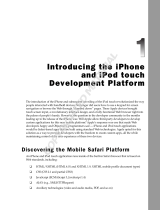 Wiley 978-0-470-25155-3 Datasheet
Wiley 978-0-470-25155-3 Datasheet
-
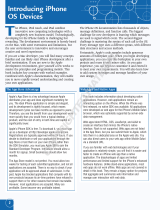 Wiley 978-0-470-55651-1 Datasheet
Wiley 978-0-470-55651-1 Datasheet
-
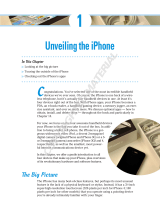 Wiley 978-0-470-87870-5 Datasheet
Wiley 978-0-470-87870-5 Datasheet
-
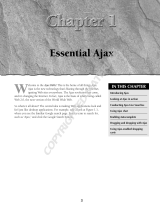 Wiley 978-0-470-10263-3 Datasheet
Wiley 978-0-470-10263-3 Datasheet
-
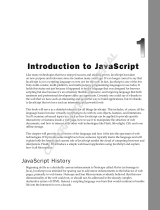 Wiley 978-0-470-34472-9 Datasheet
Wiley 978-0-470-34472-9 Datasheet
-
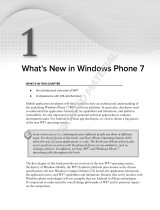 Wiley 978-1-1180-2197-2 Datasheet
Wiley 978-1-1180-2197-2 Datasheet
-
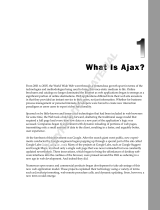 Wiley 978-0-470-10949-6 Datasheet
Wiley 978-0-470-10949-6 Datasheet
-
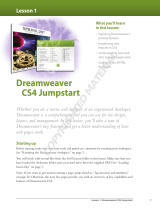 Wiley 978-0-470-41092-9 Datasheet
Wiley 978-0-470-41092-9 Datasheet
-
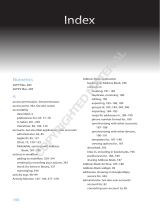 Wiley 978-1-1180-2239-9 Datasheet
Wiley 978-1-1180-2239-9 Datasheet
-
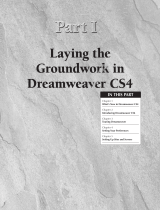 Wiley 978-0-470-38252-3 Datasheet
Wiley 978-0-470-38252-3 Datasheet
Other documents
-
For Dummies 978-0-470-88473-7 Datasheet
-
Kofax Mobile SDK 3.6.0 Developer's Guide
-
Adobe 65153049 User manual
-
Adobe CS5.5 User manual
-
Adobe Device Central CS5.5 User guide
-
Apple iPhone for iOS 3.1 software User manual
-
Deutsche Telekom Apple iPhone 4 User manual
-
Kofax SignDoc 3.0.0 Operating instructions
-
Apple Touch OS 3.0 User manual
-
Polycom VVX 1500 D User manual























